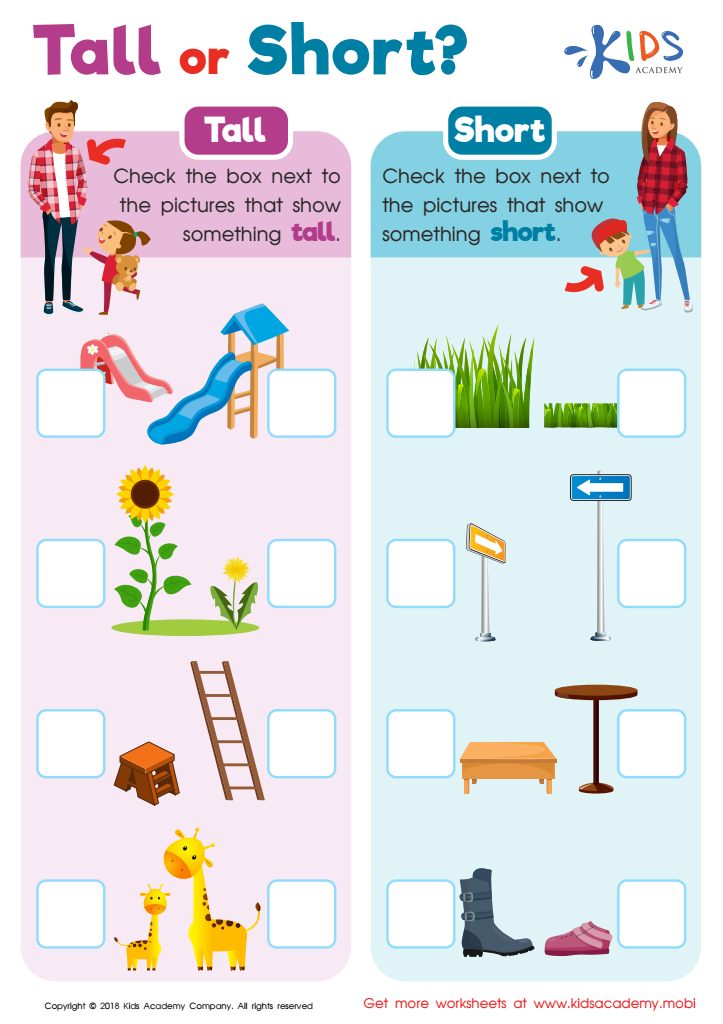Comparing heights Worksheets for Ages 3-7
3 filtered results
-
From - To
Enhance your child's understanding of comparing heights with our expertly designed worksheets for ages 3-7. These printable activities engage young learners through fun and interactive tasks that build foundational math and observation skills. Perfect for preschool and early elementary students, the worksheets encourage kids to compare and sort objects by height, fostering critical thinking and attention to detail. Ignite your child's passion for learning with colorful illustrations and simple instructions that make learning about heights both enjoyable and educational. Visit Kids Academy to start your child's journey towards mastering comparison skills through play.


Which is the Tallest? Worksheet


Zoo Height Contest Worksheet


Tall or Short? Worksheet
Comparing heights for children aged 3-7 offers a foundational step in their cognitive and social development. At this age, kids are naturally curious and starting to make observations about differences and similarities in their environment. When parents or teachers engage children in comparing heights, it reinforces early math skills, such as measurement, counting, and comparing quantities, all of which are crucial for later academic success.
Additionally, height comparison activities promote language development by encouraging children to describe what they see using comparative vocabulary, such as "taller," "shorter," "biggest," and "smallest." This helps them articulate their thoughts more clearly and improves their communication skills.
Socially, understanding and discussing differences in height can foster a sense of acceptance and empathy. Discussions about growth spurts and health can lead to a broader understanding of personal development and self-acceptance, reducing the likelihood of body image issues as they grow older.
Engaging in these activities also encourages curiosity and fosters a love for learning. Hands-on, practical experiences like these make learning more enjoyable and relevant, helping young children see the importance and applicability of their lessons in the world around them. Altogether, these skills set a strong foundation for a child's ongoing learning journey.

 Assign to My Students
Assign to My Students


















